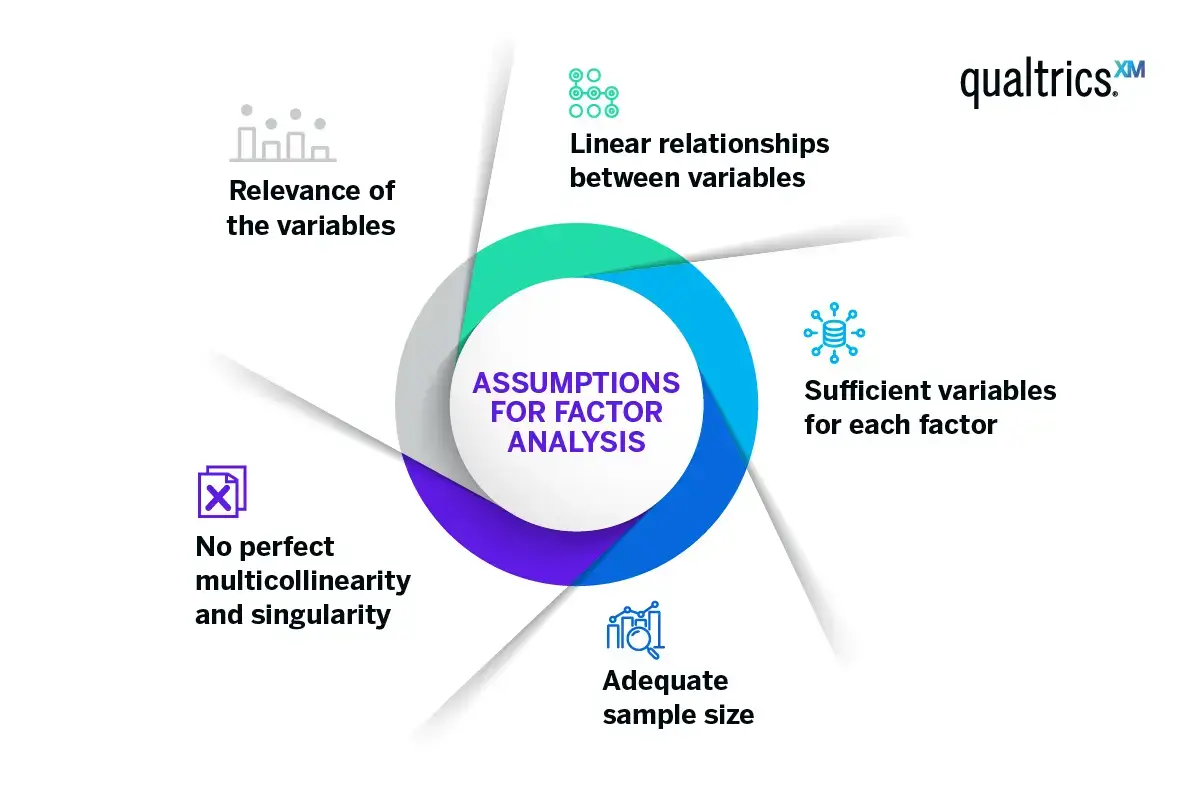(Nguồn: https://www.qualtrics.com/experience-management/research/factor-analysis/ )
Hair, J. F. (2013). Multivariate data analysis.
- Regarding the sample size question, the researcher generally would not factor analyze a sample of fewer than 50 observations, and preferably the sample size should be 100 or larger.
- As a general rule, the minimum is to have at least five times as many observations as the number of variables to be analyzed, and the more acceptable sample size would have a 10:1 ratio.
- Some researchers even propose a minimum of 20 cases for each variable. One must remember, however, that 30 variables, for example, requires computing 435 correlations in the factor analysis.
- At a .05 significance level, perhaps even 20 of those correlations would be deemed significant and appear in the factor analysis just by chance. The researcher should always try to obtain the highest cases-per-variable ratio to minimize the chances of overfitting the data.
- In order to do so, the researcher may employ the most parsimonious set of variables, guided by conceptual and practical considerations, and then obtain an adequate sample size for the number of variables examined.
- When dealing with smaller sample sizes and/or a lower cases-to-variable ratio, the researcher should always interpret any findings cautiously.
Columbia University Mailman School of Public Health. Exploratory factor analysis. https://www.publichealth.columbia.edu
- Factor analysis has the following assumptions, which can be explored in more detail in the resources linked below:
- Sample size (e.g., 20 observations per variable)
- Level of measurement (e.g., the measurement/data scenarios above)
- Normality
- Linearity
- Outliers (factor analysis is sensitive to outliers)
- Factorability\
UCLA: Statistical Consulting Group. Factor analysis | SPSS Annotated Output. https://stats.oarc.ucla.edu
- Factor analysis is a technique that requires a large sample size.
- Factor analysis is based on the correlation matrix of the variables involved, and correlations usually need a large sample size before they stabilize.
- Tabachnick and Fidell (2001, page 588) cite Comrey and Lee’s (1992) advise regarding sample size: 50 cases is very poor, 100 is poor, 200 is fair, 300 is good, 500 is very good, and 1000 or more is excellent.
- As a rule of thumb, a bare minimum of 10 observations per variable is necessary to avoid computational difficulties.
The Analysis Factor. How big of a sample size do you need for factor analysis? https://www.theanalysisfactor.com
- For example, some authors use a criterion based on the total sample size:
- 100 subjects=sufficient if clear structure; more is better (Kline, 1994)
- 100 subjects=poor; 300 =good; 1000+ = excellent (Comrey & Lee, 1992)
- 300 subjects, though fewer works if correlations are high among variables (Tabachnik & Fidell, 2001)
- Others base it on a ratio of the number of cases to the number of variables involved in the factor analysis:
- 10-15 subjects per variable (Pett, Lackey, & Sullivan)
- 10 subjects per variable (Nunnally, 1978)
- 5 subjects per variable or 100 subjects, whichever is larger (Hatcher, 1994)
- 2 subjects per variable (Kline, 1994)
And then others base it on a ratio of cases to the number of factors: 20 subjects per factor (Arrindel & van der Ende, 1985).
Tài liệu gốc:
- https://www.publichealth.columbia.edu/research/population-health-methods/exploratory-factor-analysis
- https://www.theanalysisfactor.com/sample-size-needed-for-factor-analysis/
- https://stats.oarc.ucla.edu
- Hair, J. F., Black, W. C., Babin, B. J., Anderson, R. E., & Tatham, R. L. (2013). Multivariate Data Analysis (8th ed.). Edinburgh Gate, Harlow: Pearson
- https://www.publichealth.columbia.edu


Không có nhận xét nào:
Đăng nhận xét